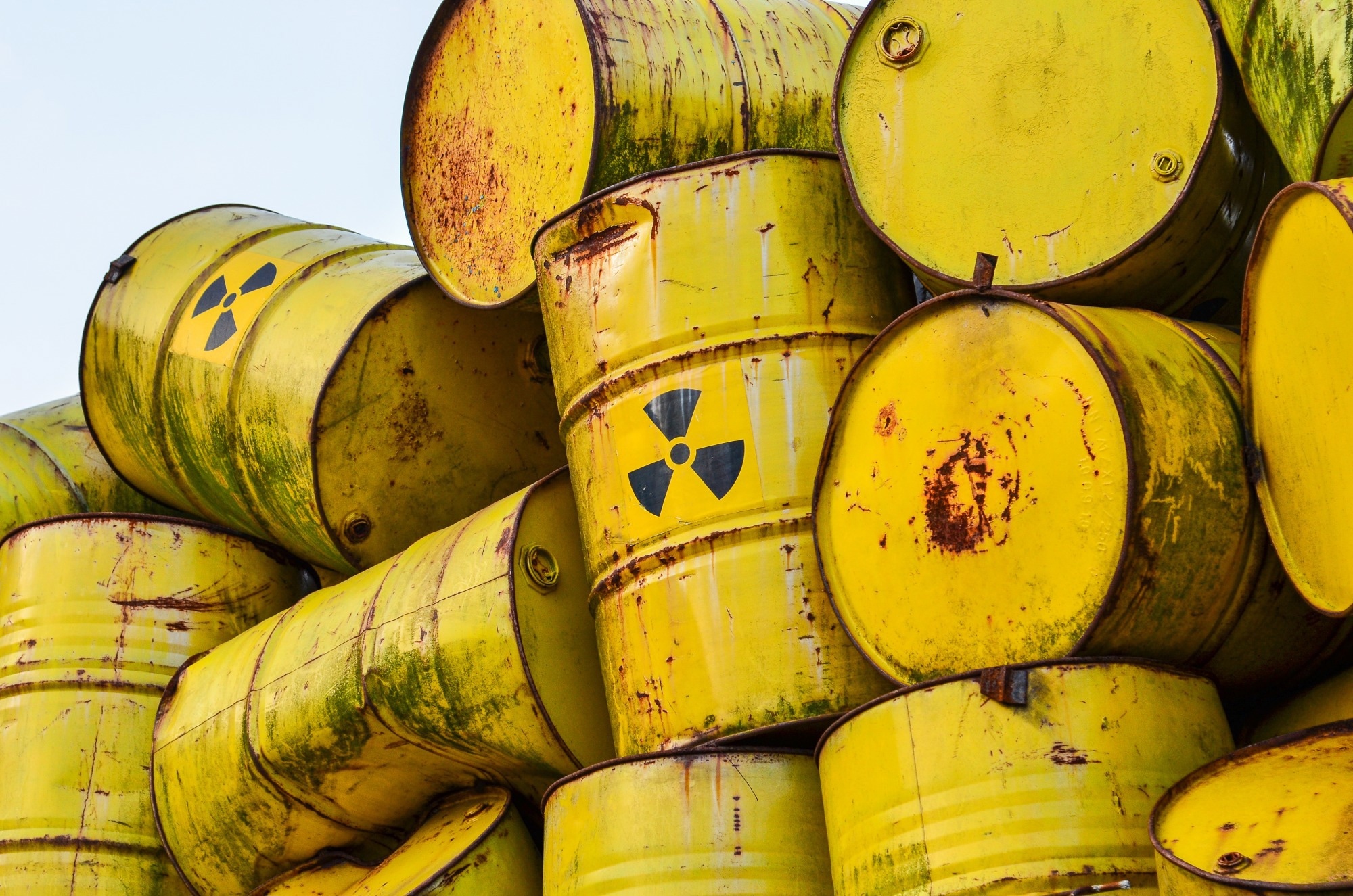Nuclear power has a key role to play in sustainable energy. It could provide a long-term solution through extended operational lifespans and minimal greenhouse gas emissions. As of 2025, nuclear energy supplies about 10 % of global electricity, with 440 power reactors operating across 31 nations.1
But nuclear power is important for more than just electricity production. It is increasingly vital in medical diagnostics, industrial processes, and space exploration. In response to rising demand for dependable, clean energy, the industry is continuing to evolve, with novel reactors under construction across the world.2
Nevertheless, the disposal of nuclear waste is still a major obstacle to its success and requires advanced strategies to guarantee long-term safety.

Image Credit: Zoltan Acs/Shutterstock.com
Vitrification and the Growing Importance of Nuclear Waste Management
High-level nuclear waste (HLW), is primarily composed of spent reactor fuel and its reprocessed liquids. It’s this waste that is the most dangerous by-product of nuclear power generation. With long-lived isotopes and high radiation levels, HLW poses substantial environmental and health risks, demanding resilient containment strategies.3,4
HLW continuously releases heat and radiation as its unstable isotopes decay. As a result, extra secure storage is needed to prevent environmental contamination.4
Specific radionuclides, such as actinides plutonium and curium, have extremely long half-lives, requiring immobilization methods capable of maintaining stability for thousands of years.3 Others, including Technetium-99 and Iodine-129, display high solubility in water, making them dangerous for groundwater contamination if not effectively contained.
These complexities require a waste form with prolonged durability, leach resistance, and mechanical stability under repository conditions.
Vitrification, the process of converting waste into glass, is one of the most effective techniques for HLW containment.4
Unlike dilution or surface storage, vitrification permanently traps hazardous materials within a stable glass matrix, preventing environmental release. Vitrified waste is also compact and insoluble, ideal for secure, long-term storage and disposal.
Glass Selection in Nuclear Waste Immobilization
The right glass composition is essential for effective vitrification. The two main materials used for HLW immobilization are borosilicate and phosphate-based glasses.
Borosilicate glass is preferred due to its superior chemical durability, minimal thermal expansion, and ability to incorporate a broad range of radionuclides.3 This material has been the standard choice in countries such as France, the United Kingdom, and the United States, where large-scale vitrification facilities operate. Its compatibility with diverse waste cations, as well as its well-characterized structure and well-established processing technology, all contribute to its effectiveness.3
However, optimizing the percentage of waste incorporated per unit volume of glass (known as "waste loading") while maintaining final product stability and processability is an ongoing difficulty in vitrification processes. Although increasing waste loading lowers overall storage expenses and shortens processing time, it requires meticulous control over glass formulation to prevent crystallization or phase separation.
Optimized borosilicate glass is typically well-suited for this purpose, but certain waste components present in HLW, such as molybdenum and noble metals, exhibit poor solubility in borosilicate matrices. This restricts the amount that can be incorporated and limits its utility as a universal HLW matrix.
Expanding Vitrification Strategies Through Customizable and Alternative Glass Solutions
Although borosilicate glass has long served as the standard for HLW vitrification, its limitations in incorporating specific waste components have driven investigation into alternative glass formulations.
Phosphate-based glasses (e.g., iron phosphate, alumino phosphate) show potential as alternatives to conventional borosilicate glass for HLW immobilization, especially for managing actinides, lanthanides, and other elements that exhibit poor solubility in borosilicate.
These phosphate glasses offer improved degradation resistance and enhanced radiation tolerance, making them well-suited for managing complex waste streams.3
Phosphate-based formulations are especially relevant for next-generation reactor technologies, such as molten salt reactors. These reactors, which use liquid fuel salts, generate fluorine-rich waste that differs substantially from traditional reactors, limiting the types of glasses that can effectively immobilize it.5
Phosphate glasses also excel in accommodating halide-rich waste streams. Their lower processing temperatures reduce volatility and allow for increased salt loading, making them a compelling solution for managing waste from sophisticated reactor designs.5
For instance, fast breeder reactors, which produce waste with high concentrations of plutonium and actinides, require non-silicate glass forms capable of accommodating these elements without compromising long-term integrity.
Leading Innovation in Nuclear Waste Vitrification
MO SCI is at the forefront of developing sophisticated glass formulations that enhance waste loading and long-term performance while addressing the shortcomings of conventional glass forms. By concentrating on tailoring glass compositions to suit specific waste properties, MO SCI helps ensure that vitrification remains a scalable and effective solution for HLW disposal, supporting the transition to next-generation reactor technologies.
Acknowledgements
Produced from materials originally authored by Rebecca Straw.
References and Further Reading
- World Nuclear Association (2025). Nuclear Power in the World Today. (online) World Nuclear Association. Available at: https://world-nuclear.org/information-library/current-and-future-generation/nuclear-power-in-the-world-today.
- Hyatt, N. and Ojovan, M. (2019). Special Issue: Materials for Nuclear Waste Immobilization. Materials, (online) 12(21), p.3611. https://doi.org/10.3390/ma12213611.
- Ashish Bohre, Kalpana Avasthi and Pet’kov, V.I. (2017). Vitreous and crystalline phosphate high level waste matrices: Present status and future challenges. Journal of Industrial and Engineering Chemistry, 50, pp.1–14. https://doi.org/10.1016/j.jiec.2017.01.032.
- Sanito, R.C., et al. (2022). A review on vitrification technologies of hazardous waste. Journal of Environmental Management, (online) 316, p.115243. https://doi.org/10.1016/j.jenvman.2022.115243.
- Riley, B.J., et al. (2019). Molten salt reactor waste and effluent management strategies: A review. Nuclear Engineering and Design, 345, pp.94–109. https://doi.org/10.1016/j.nucengdes.2019.02.002.

This information has been sourced, reviewed, and adapted from materials provided by Mo-Sci.
For more information on this source, please visit Mo-Sci.